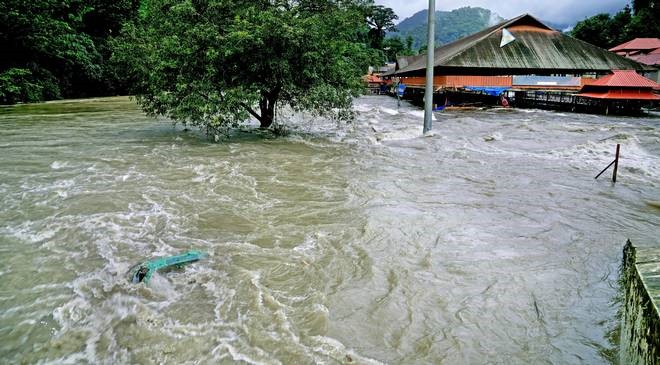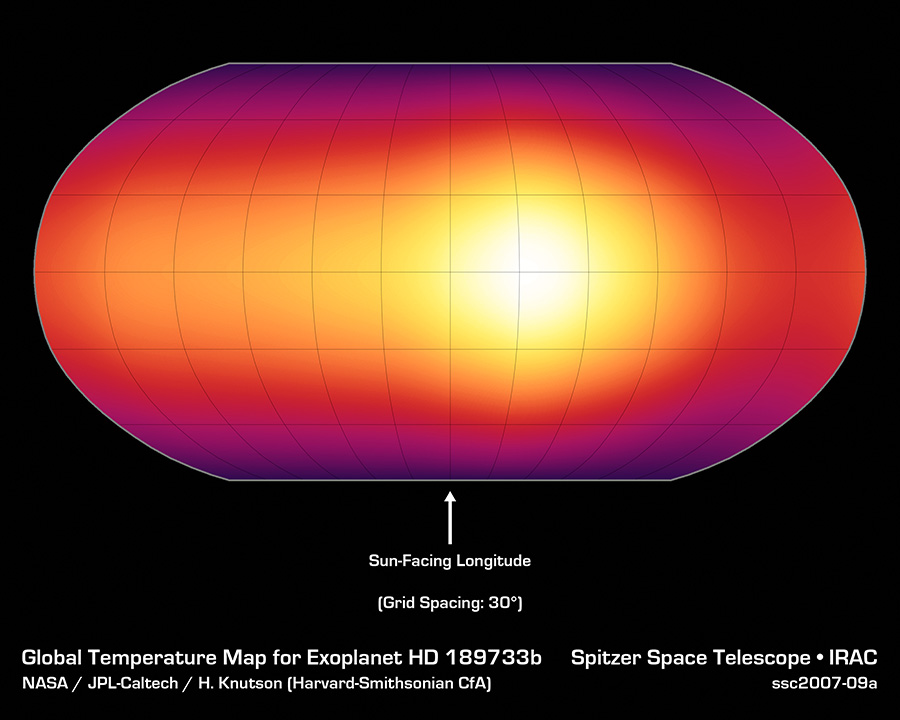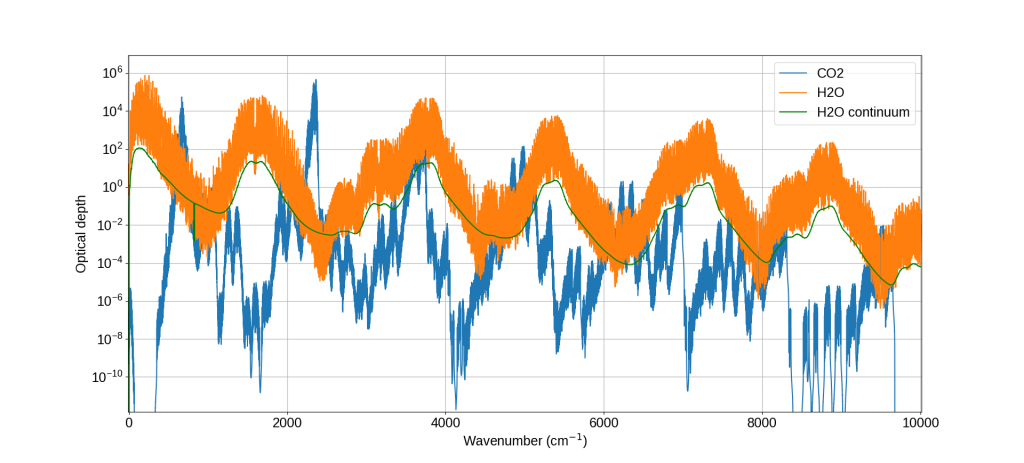By: Chimene Daleu
The Republic of Cameroon is a country in central Africa. The country extends from the coast of the Gulf of Guinea and the Atlantic Ocean through west-central Africa to Lake Chad. The majority of Cameroon has a tropical climate with two seasons: the rainy and dry seasons.
 Figure 1: Mean monthly precipitation across Cameroon (1961-2001). Plot taken from Ernest Molua, 2006
Figure 1: Mean monthly precipitation across Cameroon (1961-2001). Plot taken from Ernest Molua, 2006
The geography of Cameroon is highly diverse. The country contains highlands in central and western regions, plains in the north, and tropical forests in the south and along the coast. Its topographic features superimpose climatic variations on this north‐south gradient. The low‐lying coastal plain rises rapidly to the inland regions of high plateaus and mountain ranges. The Cameroon mountain range stretches along the country’s northern border with Nigeria, with peaks in excess of 13,000 ft. This diversity in the geography of Cameroon causes its weather to vary markedly from one region to the other. Overall, the southern regions of Cameroon are generally humid and equatorial, while the climate becomes semi‐arid toward the northern regions. The rainy season is from May to November with most precipitation falling on coastal regions (e.g., Douala, see Figure 1). The wettest months – which should be avoided if you are not a fan of rain – are between July and October (see Figure 1). The climate is pleasant in the dry season between November and February; the “Harmattan”-season between December and February is characterized by the dry and dusty north-easterly trade wind, which blows from the Sahara Desert over West and Central Africa into the Gulf of Guinea.
 Figure 2: Mean monthly temperature across Cameroon (1961-2001). Plot taken from Ernest Molua, 2006
Figure 2: Mean monthly temperature across Cameroon (1961-2001). Plot taken from Ernest Molua, 2006
The semi‐arid north of Cameroon (Maroua, see Figure 2) is the hottest and driest part of the country. That region experiences average temperatures between 22‐27°C in the cooler seasons (SON, DJF), and 26‐31°C in the warmer seasons (MAM, JJA). On the other hand, temperatures in the southern regions are largely dependent on altitude, ranging between 20-25°C, and varying little with season. Annual rainfall is highest in the coastal and mountainous regions of Cameroon (e.g., Douala; see Figure 1). The driest season is in December, January and February. The main wet season lasts between May and November for most of the country, when the West African Monsoon winds blow from the southwest, bringing moist air from the ocean. Rainfall can exceed 600 mm per month in the wettest regions (e.g., Douala and Kribi; see Figure 1), while in the semi‐arid northern regions of Cameroon the peak monthly rainfall does not exceed 400 mm (e.g., Maroua; see Figure 1). The southern plateau region has two shorter rainy seasons, occurring between May and June and between September and October (e.g., Yaounde).
When it comes to climate change impacts, Cameroon is particularly exposed because of its territories in the Sahelian zone, which are hit hard by desertification, and its territories in coastal areas that are threatened by rising sea levels. Due to the great geographic diversity in Cameroon, the nature of climate change and its impacts vary widely from one region to another. However, all agroecological zones will be affected in one way or another as well as all the sectors. The Cameroonian people must, therefore, face an important challenge, as their economic and social well-being are largely dependent on the viability of the main development sectors.
Cameroon is already facing consequences of climate change, including an abnormal recurrence of extreme weather phenomena such as high temperatures, violent winds, and heavy rainfall, which endanger communities’ ecosystems and the services they provide. The most recent extreme weather phenomena occurred over the first two weeks of October 2019, when heavy rains poured ceaselessly, destroying farms, crops and houses. This left 70,000 homeless in the northern part of Cameroon and 30,000 homeless across the border in Chad, where the Logone River broke its banks on October 1st. It was the worst flooding in northern Cameroon since 2012 when heavy rainfall persisted in the area for over a month and claimed 60 lives.

Photo by Raphael Mwadime
The economy of Cameroon depends strongly on agriculture. Therefore, the effects of global warming and climate change are likely to threaten both the welfare of the population and the economic development. For instance, the aforementioned heavy rainfall and flooding have undermined Cameroon’s efforts to reduce poverty and develop a strong, diversified, and competitive economy. Agricultural policy should, therefore, prepare for changing climate hazards. As a result, the National Adaptation Plan for Climate Change (NAPCC) was created to assist the Cameroonian people in facing such important challenges in accordance with the United Nations Framework Convention on Climate Change (UNFCCC). In 2016, within the framework of strengthening their partnership for effective fundraising for the NAPCC implementation, the Ministry of Environment, Nature Protection and Sustainable Development (MINEPDED) and Global Weather Partnership (GWP) Cameroon initiated the process of the development of a National Investment Plan for Adaptation on Climate Change (NIPACC).
The approach, taken for preparing the NAPCC, was participatory, multidisciplinary, and systematic. The NAPCC was built on 4 strategic axes:
- improving knowledge on climate change
- educating the population to climate change adaptation
- reduce the country’s vulnerability to the impacts of climate change and strengthen its capacity for adaptation and resilience
- facilitate the coherent integration of climate change adaptation in relevant policies and programs, especially in development planning processes and strategies
References

 Figure 1: Hourly measured Ozone concentrations at Reading New Town from 1 March 2020 to 15 April 2020. Date of social distancing implementation on 16 March 2020 (magenta dashed) and non-essential travel restrictions on 23 March 2020 (black dashed). Data from www.uk-air.defra.gov.uk.
Figure 1: Hourly measured Ozone concentrations at Reading New Town from 1 March 2020 to 15 April 2020. Date of social distancing implementation on 16 March 2020 (magenta dashed) and non-essential travel restrictions on 23 March 2020 (black dashed). Data from www.uk-air.defra.gov.uk. Figure 2: Hourly measured Ozone concentrations (grey), 24-hour moving averaged measured Ozone concentrations (blue) and predicted Ozone concentrations (red) at Reading New Town from 1 March 2020 to 15 April 2020.
Figure 2: Hourly measured Ozone concentrations (grey), 24-hour moving averaged measured Ozone concentrations (blue) and predicted Ozone concentrations (red) at Reading New Town from 1 March 2020 to 15 April 2020.
 Figure 1: Average rainfall over 15-17 August 2018 (computed using
Figure 1: Average rainfall over 15-17 August 2018 (computed using  Figure 2: A photo showing the flooded Periyar river, submerging the surrounding areas during the August 2018 flood (
Figure 2: A photo showing the flooded Periyar river, submerging the surrounding areas during the August 2018 flood ( Figure 3. Relative contributions to changes in moisture flux from changes in moisture (left column) and winds (right column).
Figure 3. Relative contributions to changes in moisture flux from changes in moisture (left column) and winds (right column). Figure 4: Modelled inflow (blue:control; grey:pre-industrial; red:future) and storage (orange solid:control; dashed:pre-industrial; dotted:future) for the Idukki reservoir system. For comparison, black crosses show the daily observations of storage, and the grey dashed line shows the stated maximum capacity of the reservoir.
Figure 4: Modelled inflow (blue:control; grey:pre-industrial; red:future) and storage (orange solid:control; dashed:pre-industrial; dotted:future) for the Idukki reservoir system. For comparison, black crosses show the daily observations of storage, and the grey dashed line shows the stated maximum capacity of the reservoir.








